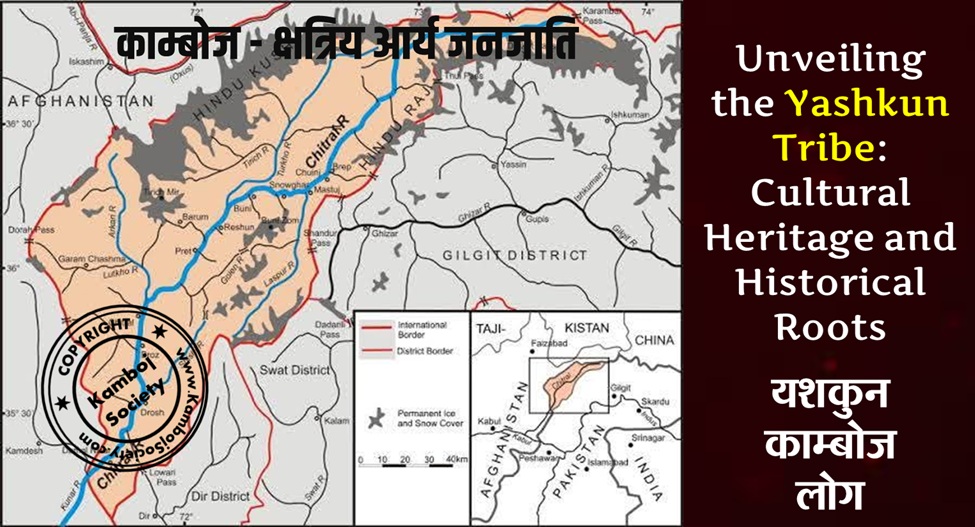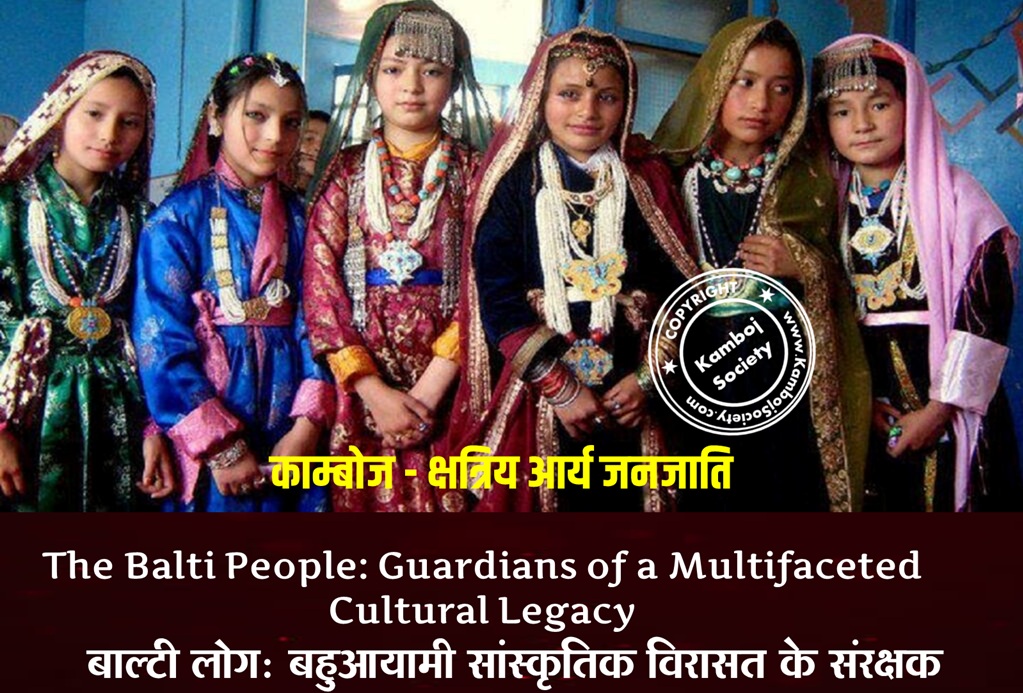The Manusmriti translated "Laws of Manu" is a foundational work of Hindu law and ancient Indian society, written c.200 in India. It is one of the eighteen Smritis of the Dharma Sastra (or "laws of righteous conduct"). Unlike the Vedas which are considered of divine origin, the Smritis are considered to be of human origin and contain laws, rules and codes of conduct to be applied by individuals, communities and the nations.
Manu's definition of Vratyas
Manusmriti (verse II.39) informs that, if after the last prescribed period, the people (twice-born) remain uninitiated, they become Vratyas, fallen from Savitri and thus discarded by the Aryans.
ata uurdhvam trayo 'apy ete yathaakaalam a.samskrtaah |
saavitriipatitaa vraatyaa bhavanty aaryavigarhitaah || 39 ||
— (Manusmriti II.39)
Manusmriti (verse X.20) informs that those (sons) whom the twice-born beget on wives of equal caste, but who, not fulfilling their sacred duties (allusion is obviously towards the Kambojas, Sakas, Pahlavas etc), are excluded from the Savitri (initiation), one must also designate by the appellation Vratyas.
dvijaatayah savarnaasu janayanty a.vrataams tu yaan |
taan saavitriiparibhrastaan vraatyaan iti vinirdizet || 20 ||
— (Manusmriti X.20)
Manusmriti on Kambojas, Yavanas, Shakas etc
Manusmriti (verse X/43-44) informs us that, in consequence of the omission of sacred Brahmana |Brahmanical rituals/codes and of their not heeding to the advice of Brahmanas, the following noble Kshatriyas have gradually sunk in this world to the state of vrishalatam i.e become degenerate Kshatriyas viz: the Paundrakas, Chodas, Dravidas, Kambojas, Yavanas, Shakas, Paradas, Pahlavas, Chinas, Kiratas, Daradas and Khashas etc.
shanakaistu kriya-lopadimah Kshatriya-jatayah |
vrashalatvam gata loke brahmna-darshanen cha || 43 ||
Paundrash-Chaudra-Dravidah-Kamboja-Yavanah-Shakah |
Paradah Pahlavash-Chinah Kirata Daradah Khashah || 44 ||
— (Manusmritti, X.43-44)
Based on above statements of Manusmriti, the scholars have listed the Kambojas, Sakas, Yavanas, Pahlavas, Kiratas, Chinas, Dravidas and several other ancient Kshatriya clans as Vratya Kshatriyas or degraded Kshatriyas etc (See: Origin and Growth of Caste in India, Vol I, 1968, p 121-122, Dr N. K. Dutt).
Mahabharata supports Manusmriti
A very similar information on the Kamboja, Saka, Yavana and other Kshatriyas is also contained in the Anusasanaparva of Mahabharata (MBH verse 13.33.21) which also states that due to the wrath of the Brahmanas (resulting from their neglect of sacred Brahmanical codes and regulations), these formerly noble Kshatriya clans of the Shakas, Yavanas, Kambojas etc have sunken to the state of vrishalatvam i.e become degraded Kshariyas or Vratyas.
Brahmana yam prasha.nsanti purushah sa pravardhate |
brahmanairyah parakrushtah parabhuyatkshanaddhi sah || 20 ||
Shaka Yavana Kambojas tastah Kshatriya-jatayah |
vrishalatvam parigata Brahmananamadarshanat || 21 ||
— (Mahabharata 13.33.20-21)
Compare also: Mahabharata (13.35.17-18) below:
Mekala Dramidah Lathah Paundrah Konwasirah |.
Shaundika Darada Darvash Chaurah Shabara Barbarah || 17 ||
Kirata Yavanashchaiva tastah Kshatriya-jatayah |
vrishalatvamanuprapta brahmananamadarshanat || 18 ||
— (Mahabharata 13.35.17-18)
The Mekalas, the Dravidas, the Lathas, the Paundras, the Konwasiras, the Saundikas, the Daradas, the Darvas, the Chauras, the Sabaras, the Barbaras, the Kiratas, the Yavanas, and numerous other tribes of Kshatriyas, have become degraded into the status of Vrishaltam i.e degraded Kshatriyas or Sudras through the wrath of Brahminas.
Consequences of neglecting the Brahmanas
The inevitable consequences of neglecting the Brahmanas are beautifully highlighted in the Epic poetry|epic which states that the descendents of those Kshatriyas who neglect the Brahmanas soon become Dasyus, Barbaric |Mlechchas or Barbarians (MBH 12.73.9-10).
naisham putra vedamadhiyate cha,
yada brahmakshatriyah santyajanti || 9 ||
naishamukshavardhate jatu gehe
nadhiyate sa praja no yajante .
apadhvastA dasyu bhuta bhavanti
ye brahmanah kshatriyansantyajanti || 10 ||
— (MBH 12/73/9-10).
Medhatithi and Kulluka on Kambojas, Shakas etc
Thus we see that the later commentators like Kulluka as well as Medhatithi, in their Bhasya (commentaries) on Manusmriti (verse X.32 and X/43-45) clearly brand the Paundrakas, Chodas, Dravidas, Kambojas, Yavanas, Shakas, Paradas, Pahlavas, Chinas, Kiratas, Daradas etc as belonging to the Dasyu or Mlechcha class. The primary reason again is stated to be neglect of Brahmanas and the disappearance of sacred brahmanical rites (upanayanadi, kriya-lopadimah) among these tribes.
An attempt to accommodate aliens into Hindu fold
The foreign warrior clans of the Sakas, Kambojas, Yavanas, Pahlavas and the others, after their entry into India (2nd/1st c BC), did not immediately switch to the religion and social customs of the Hindu society. Obviously, they must have continued to observe their own culture and religious practices for some time.
In their anxiety to prove the Ancient history|antiquity of the sacred Hindu Caste System and also, in great pains to reasonably accommodate these foreign hordes into the social organization of the Hindus, the authors of Manusmriti (X.43-44) as well as Mahabharata (Anusasnaparava 13.33.20-21; 13.35.17-18) had designed social laws (around Christian era) to reasonably accommodate these Alien (law)|aliens into the caste-based Hindu society by using a political language that these tribes, in fact, were originally from the Indo-Aryans|Indo-Aryan stock, but got degenerated into vrishaltam due to their neglect of the Brahmanas as well as their non-observance of the sacred Brahmanical codes and regulations. It was, in a way, also an open invitation to these foreigners to come within the Brahmanical fold if they wanted to get the exalted status of noble Kshatriyas.
That the Kambojas etc were non-Indo-Aryans|Indo-Aryan foreign tribes is clearly reflected from the above statements of Manusmriti as well as Mahabharata (See: Geographical Data in Early Puranas, 1978, p 163, Dr M. R Singh)
A formal procedure to elevate one’s position
A formal procedure is detailed in Mahabharata as to how these Vratya Kshatriyas (or the alien hordes) could attain the high status of noble Kshatriyas in the Hindu society. The most important among the recommendations are the performance of paka-yajanas (minor sacrifices) and giving rich gifts to the Brahamin priests at these sacrifices (MBH XII.65.13-22; also see: Comprehensive History of India, Dr K. A. Nilkanta Sastri, Vol II, 1957, p 468)
dakshina sarvayagyana.n dttavya bhutimichchhata |
pakayagya maharhashcha kartavyah sarvadasyubhih || 21 ||
etanyevam prakarani vihitani puranagha |.
sarvalokasya karmani kartavyaniha parthiva || 22 ||
— (Mahabharata 12I.65.13-22, Gorakhpore Edition)
There are references in Mahabharata that someone donating one hundred horses of Kamboja variety to a Brahmin ascetic would get cleared of all his shortcomings and worldly sins (and would be graced in the Hindu society as an exalted Kshatriya).
shata.n tai yastu kambojan.brahmanebhyah prayachchhati |
niyatebhyo mahipala sa cha papatpramuchyate || 11 ||
— (Mahabharata 12.35.11)
Thus, a way for upward mobility for the so-called Vratyas/Mlechchas and the aliens indeed existed in the ancient Hindu Society.
From the notices made above, one can easily see that the exalted or the degraded Kshatriya status involved material benefits to the religious hierarchy and therefore, was merely a function of favors or disfavors a clan can bestow on the Brahmana |Brahmanical clergy and probably nothing more, nothing less than that.
Some opinions from scholars
"The leaders of ancient Indian society were eager to place the foreigners in the social organization of the country; e.g Manu regards the Kambojas as degraded Kshatriyas (X-43-44) while Patanjali in his Mahabhasya (Pa II.4.10) regards the Sakas and Yavanas as anivasita (pure) Shudras. Even the Gautama Dharamasutra (IV.21) regards the Yavanas or Greeks as sprung from the Shudra females + Kshatriya males " (Ref: Journal of Ancient Asian History, Vol I, Part I & II, 1967-68, p 89, Dr D. C. Sircar).
"The foreigners were expected to practice the same normal pieties as the Hindus, and the latter in return considered them henceforth, as belonging to their own social organization " (The Cultural Heritage of India, Vol I, p 612; cf: History and Culture of Indian People, The Vedic Age, p 313-314, Dr R. C Majumdar, Dr A. D. Pusalkar, Dr K. D. Munshi).
See also
ManusmritiCaste
Kshatriya
Shudra
Kambojas
Kambojas in Indian Literature
Sakas
Yavana
Hinduism
External links
References
- Manusmiriti
- Mahabharata
- Manubhasya of Medhatithi
- Kulluka's Bhasya on Manusmriti
- Some Kshatriya Tribes of Ancient India, 1924, Dr B. C. Law
- Ancient Kamboja, People and the Country, 1981, Dr J. L. Kamboj
- Original Sanskrit Texts, Vol-I, Dr J. Muir
- Cultural Heritage of India, Vol-I Article by Dr Debila Mitra
- Journal of Ancient Indian History, Vol I, Part I & II, Dr D. C. Sircar
- Land of the Kambojas, Purana, Vol I, No 2, Dr D. C. Sircar
- Hunas, Yavanas and the Kambojas, Indian Historical quarterly, XXVI, 2, 1950, Dr S. B. Chaudhury
- Political and Social Movements in Ancient Panjab, Dr Buddha Parkash
- Sagara and the Haihayas, Vasishtha and Aurva, Journal of Royal Asiatic Society, 1919, Dr P. E. Pargiter










